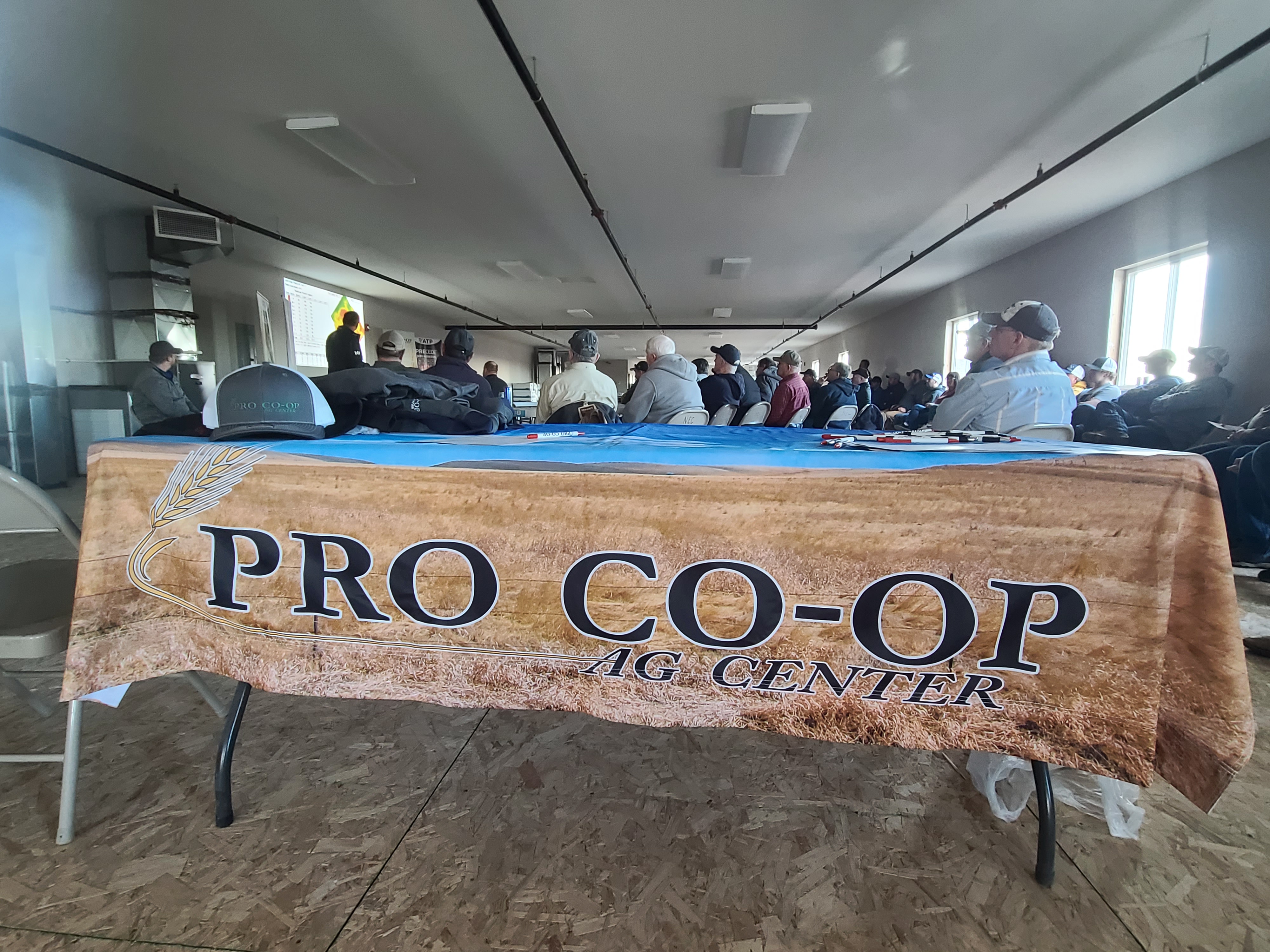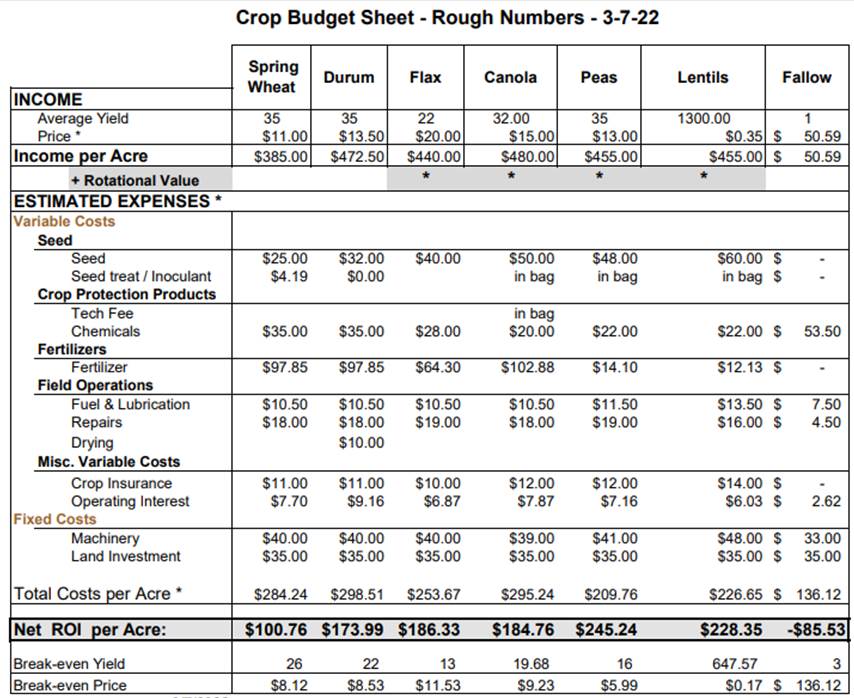March Agronomy Update
Mar 09, 2022

Not going to lie – this update is longer than normal. But there’s a lot to think about right now as Farming Season is right around the corner. I encourage you to take time to read through it. Here’s a short list of what I walk through this time:
Supply Update
It doesn’t take a PhD in Economics to know that inflation, war, Covid, worker shortages, truck availability, lack of imports from China, hurricane damage in the South, and raw ingredient supply interruptions have taken a huge toll on product pricing and availability throughout the country. Ag inputs are no different. Price is one thing, but supply is another. Remember that as you think through whom you will work with as a trusted advisor and supplier this spring. We sincerely hope you continue to trust Pro Co-op as your preferred choice! We have worked relentlessly since July of 2021 to secure the crop inputs we think you will need for 2022, knowing these supply chain issues were coming. But we ask you to PLEASE communicate your crop plans with us in order to get through this together!
Chemical
Roundup and Liberty have been the biggest challenges, but uncertainty around 2,4-D’s and many others is definitely popping up. Those two have seen the largest increases in price, but most herbicides and fungicides have only taken a 5-7% increase.
It’s not all doom and gloom in Crop Protection, however. By having solid relationships with our suppliers and addressing the issue early (starting last summer preparing for this spring), I can honestly say that I feel good about our supply position on most products. Especially when compared to the rest of the industry and other Ag Retailers. There are exceptions to that rule of course, but for the most part – Pro Co-op physically has on hand a large selection of the most important chemistries out there.
Fertilizer
Trying to predict the market these days is almost impossible. Fundamentals are constantly battling emotion, speculation, and what-if scenarios. That goes for your grain commodities as well as fertilizer. The best thing I can say is to look at your operation as it stands today and use real numbers on a per acre basis (See the Crop Budget Sheet below). Are you farming in 2022? If the answer is “Yes”, then I can’t stress enough to get a plan in place NOW versus waiting until a few days before seeding weather. If the numbers make sense for you, that’s the time to purchase your fertilizer. Hitting the bottom or catching it on the way down is very very unlikely.
I’m sure some are very concerned about moisture. I get it. But don’t forget we have record commodity prices right now. And most weather models I’ve seen shows average rainfall for this season (not extreme heat and dryness like 2021). Planning for a failure almost ensures a failure. Know that it still takes nutrients to build a crop – regardless of the moisture situation. Even if you decide to cut back on rates by “x” percent – that is good info for us to know so we can have the right quantity on hand. We will not have “extra” tons available at the end of the season in case of a topdress situation – UNLESS you commit to them early enough for us to source it. There is way too much risk financially for us to gamble on that.
There are many reasons why the markets have reached the point they have. But as the Russia/Ukraine conflict grows, keep this in mind: Russia supplies 7.5 million tons of urea to the world. They also provide approximately 20% of the world’s phosphate. Even if the conflict is resolved tomorrow, there are long lasting effects. If companies like McDonald’s and Netflix are refusing to do business in Russia, what do you think about the shipping companies (ocean vessels), fertilizer brokers, etc….? No one is going to bounce back right away and want to do business with Russia. While North America produces a huge amount of fertilizer tons, very real concerns about Railroad strikes, trucker shortages, and skyrocketing fuel prices change freight cost and availability.
The cure for high prices is high prices. But that’s over time. When that timing occurs seems to be further and further out these days….
Summary
This is a textbook year to work closely with your trusted Agronomist, Banker, Grain Buyer, Insurance Agent, and more. Decisions on what to do are not easy. But in our case – sitting down and bouncing ideas and real numbers off of us may lead to the best decision possible in a tough situation. Different rates, tankmixes, and forms (foliar nutrition vs. or in addition to granular fertilizer) should all be discussed. Are you used to pre-spraying or post-emergent spraying with a favorite chemical combination? Your first choice may or may not be available this year – or there could be other more cost-effective products you can use while still accomplishing the same goal. Having a plan B, C, or D and willingness to change as the season progresses will be huge.
Early Season Suggestions – Set your crop up for success, Then See How Weather Goes
FOOD FOR THOUGHT – CROP BUDGETS FOR 2022:

Finally, a reminder of our upcoming Grower Meetings.
Excellent programs planned. We do this to help our growers make educated and informed decisions – please plan on attending!

Luke Dighans
Agronomy Manager
- Supply / Pricing Update
- Meeting Announcement
- Crop Budget Sheet
Supply Update
It doesn’t take a PhD in Economics to know that inflation, war, Covid, worker shortages, truck availability, lack of imports from China, hurricane damage in the South, and raw ingredient supply interruptions have taken a huge toll on product pricing and availability throughout the country. Ag inputs are no different. Price is one thing, but supply is another. Remember that as you think through whom you will work with as a trusted advisor and supplier this spring. We sincerely hope you continue to trust Pro Co-op as your preferred choice! We have worked relentlessly since July of 2021 to secure the crop inputs we think you will need for 2022, knowing these supply chain issues were coming. But we ask you to PLEASE communicate your crop plans with us in order to get through this together!
Chemical
Roundup and Liberty have been the biggest challenges, but uncertainty around 2,4-D’s and many others is definitely popping up. Those two have seen the largest increases in price, but most herbicides and fungicides have only taken a 5-7% increase.
It’s not all doom and gloom in Crop Protection, however. By having solid relationships with our suppliers and addressing the issue early (starting last summer preparing for this spring), I can honestly say that I feel good about our supply position on most products. Especially when compared to the rest of the industry and other Ag Retailers. There are exceptions to that rule of course, but for the most part – Pro Co-op physically has on hand a large selection of the most important chemistries out there.
Fertilizer
Trying to predict the market these days is almost impossible. Fundamentals are constantly battling emotion, speculation, and what-if scenarios. That goes for your grain commodities as well as fertilizer. The best thing I can say is to look at your operation as it stands today and use real numbers on a per acre basis (See the Crop Budget Sheet below). Are you farming in 2022? If the answer is “Yes”, then I can’t stress enough to get a plan in place NOW versus waiting until a few days before seeding weather. If the numbers make sense for you, that’s the time to purchase your fertilizer. Hitting the bottom or catching it on the way down is very very unlikely.
I’m sure some are very concerned about moisture. I get it. But don’t forget we have record commodity prices right now. And most weather models I’ve seen shows average rainfall for this season (not extreme heat and dryness like 2021). Planning for a failure almost ensures a failure. Know that it still takes nutrients to build a crop – regardless of the moisture situation. Even if you decide to cut back on rates by “x” percent – that is good info for us to know so we can have the right quantity on hand. We will not have “extra” tons available at the end of the season in case of a topdress situation – UNLESS you commit to them early enough for us to source it. There is way too much risk financially for us to gamble on that.
There are many reasons why the markets have reached the point they have. But as the Russia/Ukraine conflict grows, keep this in mind: Russia supplies 7.5 million tons of urea to the world. They also provide approximately 20% of the world’s phosphate. Even if the conflict is resolved tomorrow, there are long lasting effects. If companies like McDonald’s and Netflix are refusing to do business in Russia, what do you think about the shipping companies (ocean vessels), fertilizer brokers, etc….? No one is going to bounce back right away and want to do business with Russia. While North America produces a huge amount of fertilizer tons, very real concerns about Railroad strikes, trucker shortages, and skyrocketing fuel prices change freight cost and availability.
The cure for high prices is high prices. But that’s over time. When that timing occurs seems to be further and further out these days….
Summary
This is a textbook year to work closely with your trusted Agronomist, Banker, Grain Buyer, Insurance Agent, and more. Decisions on what to do are not easy. But in our case – sitting down and bouncing ideas and real numbers off of us may lead to the best decision possible in a tough situation. Different rates, tankmixes, and forms (foliar nutrition vs. or in addition to granular fertilizer) should all be discussed. Are you used to pre-spraying or post-emergent spraying with a favorite chemical combination? Your first choice may or may not be available this year – or there could be other more cost-effective products you can use while still accomplishing the same goal. Having a plan B, C, or D and willingness to change as the season progresses will be huge.
Early Season Suggestions – Set your crop up for success, Then See How Weather Goes
- Seed – How vigorous is a 80 year-old with several health problems and nutrient deficiencies vs. a 20 year-old in good health? If they ran a marathon, they’d probably both finish the race, but there would be a big difference in time! If you think about this in terms of seed, which one would you pick to win the race?
- Quality Seed, Variety, and Populations – No matter which variety and how fresh the genetics are, take a strong look at population. Germination is only one small piece to the puzzle. Seed size, cold vigor, expected seedling mortality in the field, seeding equipment (consistency of depth and fertilizer placement) all make huge differences on the final seeds per acre you put down.
- Seed Treatment – Do you have a history of wireworms? Did you know that root rots still occur even when soil is dryer than normal?
- Seedling Fertility and Biostimulants – I strongly encourage you to consider adding PreCede ® | ATP Nutrition to your normal treating program. This provides things like Phosphorus, Zinc, Boron, and others right at the seed. In combination with Seaweed Extracts that are involved in mitigating stresses, building that rooting system should be the number one priority in establishing a crop. It is a cheap investment to get your stand established vigorously.
- Fertility – Maybe your soil tests show high levels of N? Perfect. Dial that one back accordingly. But don’t forget that it takes P, K, S, Chloride, Zinc, Boron, Copper, and a few others in specific ratios to build every crop. Not just cereals – every crop. If you are going out with lower rates of dry fertilizer at seeding, keep foliar options on the table should the rainfall and stand warrant it.
FOOD FOR THOUGHT – CROP BUDGETS FOR 2022:

Finally, a reminder of our upcoming Grower Meetings.
Excellent programs planned. We do this to help our growers make educated and informed decisions – please plan on attending!

Luke Dighans
Agronomy Manager